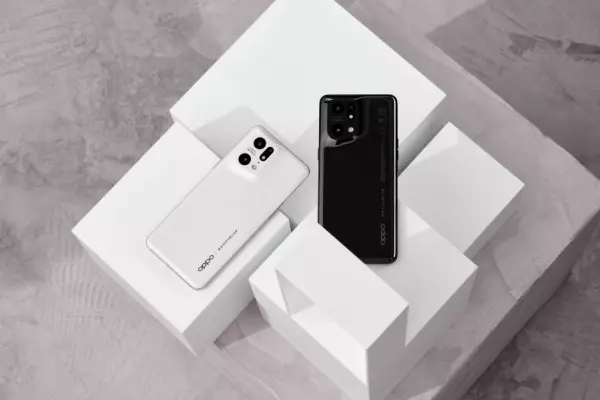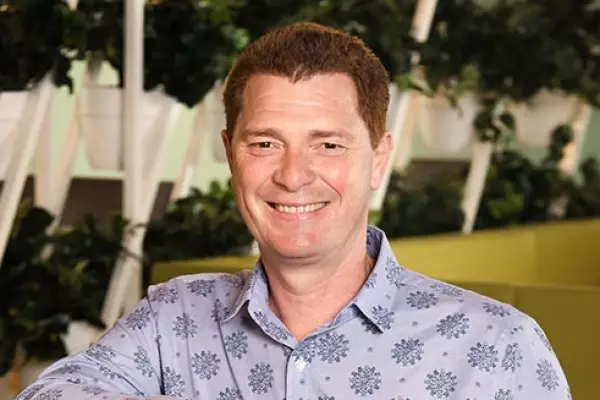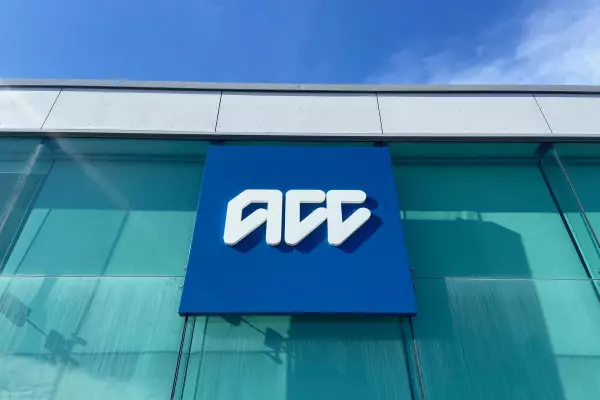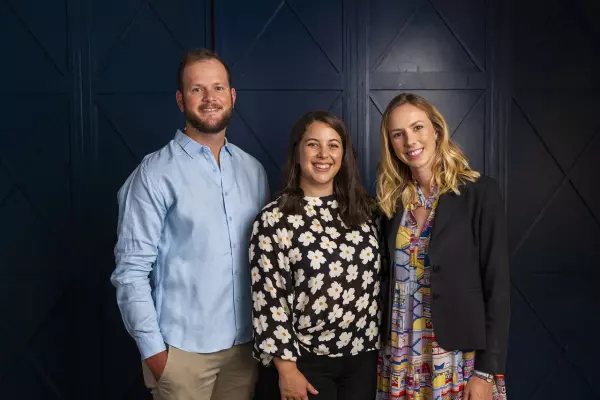While the America’s Cup noisily rages away out on the water and in the bars of Auckland’s viaduct, the cordoned off broadcast area sits quietly nestled next to the now-dormant Team UK and American Magic team bases.
It’s a Tuesday at 4pm, fifteen minutes before race nine is due to start with the cup scored at 5-3 in Team New Zealand’s favour against Luna Rossa.
In the darkened broadcast room, on-air and off-air voices assuredly ring out that racing will happen despite the low winds.
“No one knows,” asserts Ian Taylor, founder of Animation Research Limited (ARL), the company responsible for the on-screen graphics that decipher the sailing action for TV viewers.
Taylor knows a thing or two about the wild guesswork of the weather and the cup having attended since 1992. ARL is working again in 2021 despite a recent dispute with five-time cup winner and compatriot Russell Coutts' SailGP over graphics copyright issues.
Resolved in time for racing, Dunedin-based ARL plays an integral part in translating the intricacies of sailing for a global audience, with the broadcast serving 160 countries.
Perhaps because it’s race nine and people are in the swing of things, but the broadcast room is very quiet and calm. The lights are dimmed.
“That’s correct, that’s correct, that’s correct, don’t touch anything,” a woman’s voice cuts through the dark, as authoritative as the sailors of the cup.
Two workers sit in front of MacBooks listening to the staggered broadcast a few seconds before it goes live to the world. Their job is to bleep out any swear words from the microphoned Kiwis and Italians on the water.
Racing is delayed until 4:30pm.
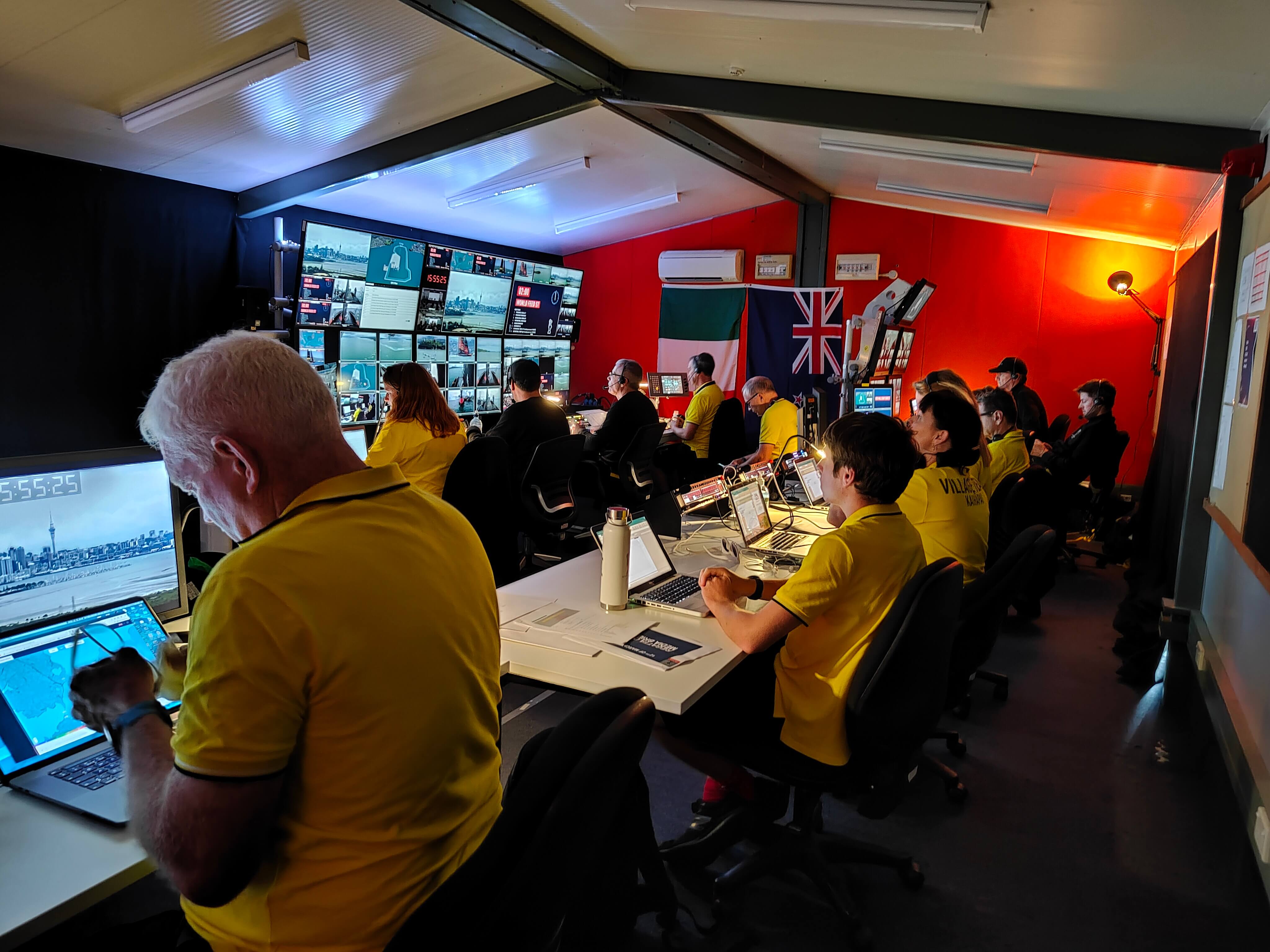 The America's Cup broadcast room in Auckland
The America's Cup broadcast room in AucklandDecoding the Cup
Next door in ARL’s comparatively brightly lit cabin, four men sit monitoring a huge bank of screens.
Taylor shows how the data feeds come in. By his own admission, he’s just there to make the tea.
“Ian Taylor just loves it, eh? Absolute fizzer!” says John Rendall of Taylor’s audible enthusiasm.
Part of ARL since 2006, Rendall’s chipper outgoing mood is in contrast with the quiet concentration of his colleagues Paul Sharp, Ben Meinung-Thompson, and Logan Griffin.
Sharp, a shareholder, wrote the first code for ARL’s debut 1992 America’s Cup in San Francisco and sits calmly in the corner.
“Everybody sends stuff in different ways,” Meinung-Thompson explains of the data sets ARL must pull together from various sources to achieve the graphics.
“Paul will process it all and put it into one so then it can be fed through the 3D and AR machine.”
This is the first cup where ARL has used augmented reality – AR – mixed with 3D graphics. AR more accurately denotes the positions of the boats on the course compared to overlaying 2D images.
 ARL's Paul Sharp, John Rendall, and Ben Meinung-Thompson
ARL's Paul Sharp, John Rendall, and Ben Meinung-ThompsonAs well as video links from the overhead helicopters, Rendall says there is a huge Wi-Fi-like mesh network of sensors and cameras around the course, on the boats, and in the sky. ARL combines all that with zoom information from cameras to create a 3D spatial model of the course.
He says it took three years to achieve.
“There are lots of things involved even just calibrating the lens on the camera, figuring out why a particular frequency is causing more problems than another on the helicopter, the actual physical movement, and then filtering it out to get rid of the jitter.”
All are wearing headsets with audio fed in, so all you can hear as a bystander is the whir of the server stack and the welcome hum of the air-con. It’s a very calm atmosphere.
“You should have been in here a few months ago,” Meinung-Thompson says later. By now the broadcasts are second nature, but in the pre-regattas of December, ARL had to go live to air having not used the full system in action yet.
“We did our last release of the output software four minutes before we started the first race,” Rendall says, such was the pressure to have everything ready without the luxury of practice races.
The team calmly reacts to race organisers adjusting the course position, delaying the race until 4:45pm.
In the thick of it
With the race underway and Luna Rossa edging ahead of Team New Zealand, the ARL team occasionally speaks to the broadcast room next door over radio.
The patchy signal from a helicopter suddenly means there’s no AR feed. Rendall pushes a button.
“We have no AR until we tell you,” he says, releasing the button.
“S*** this is a boat race, eh!” he declares to the room.
“Even though we’ve got no data.”
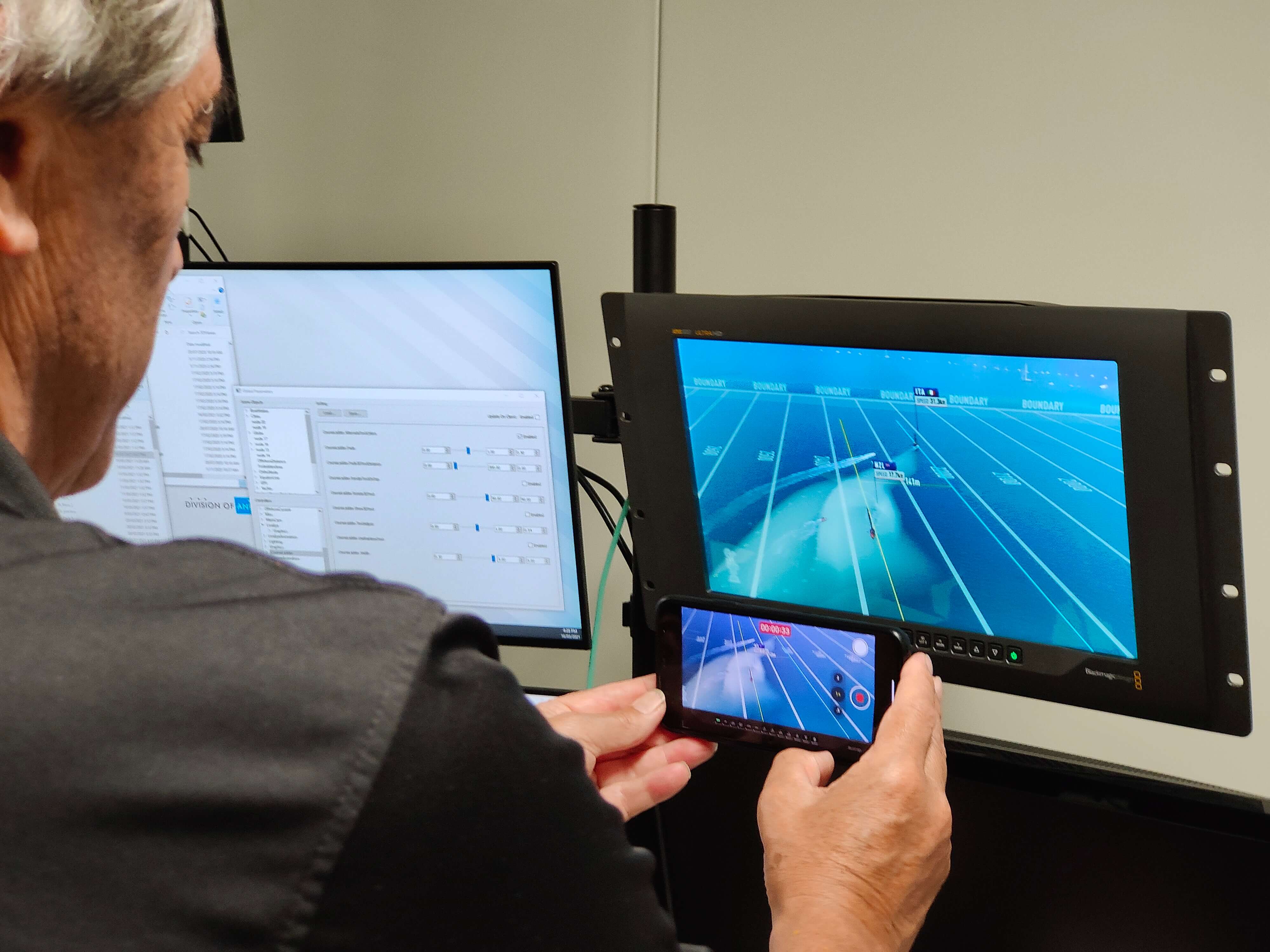 Ian Taylor admiring his team's handiwork
Ian Taylor admiring his team's handiworkA few minutes later the feeds are back, and the team casually turns on a wind shadow feature that it only finalised the day before, beaming it out to the world.
Taylor says the team realised they had the right data points to add in the wind visualisation in the boats’ wakes to demonstrate the movement to viewers. Colleagues back in Dunedin tested it out and it was ready to go for race nine.
Luna Rossa makes a mistake at the last turn, and Team New Zealand pulls into a comfortable lead, winning by a distance. Now 6-3 up in the series, race ten is confirmed for a 5:45pm start.
TV cameras cut to Team New Zealand captain Peter Burling who gives a post-race on-air interview, playing down the fact one more win will see his team win the cup.
“It’s not about winning the America’s Cup, it’s about having a good time with your mates,” Meinung-Thompson says as he smiles at Burling’s reserve. But he sums up the infectious nature with which ARL approaches its work: hard work, but always fun.
“Mate, we might be blowing the roof off it tonight!” Rendall says. The team is evidently looking forward to being able to blow off steam. There aren’t many sporting events that drag on for months.
Rendall seems in charge despite no clear hierarchy. Taylor proudly says Rendall has “no qualifications at all”.
“Hey, don’t be so rude,” Rendall shoots back. “I’m not stupid, I just thought school was boring.”
It’s a fine sign-off line, as racing is abandoned due to wind changes. There will be no party for ARL on this night.
Legacy
America’s Cup tradition sees the winner of the series host the next one. There was consternation in the sailing world when the USA, winners of the 2013 Cup, shopped the race around to overseas hosts.
The 2017 series was held in Bermuda, against custom.
Taylor says he believes this shopping around isn’t a bad thing. If Team New Zealand wins this year, he hopes they will take the 2025 Cup abroad.
“It’s not a yacht race, it’s a technology race,” he says.
“If they want to tell that story, the best way to do it is overseas.”
He argues that a New Zealand-branded team and boat will serve the sport better if the America’s Cup is held in another country, and that cementing NZ as a technological force is important for the country’s international image and business opportunities.
“What it does for our brand of technology globally is unrivalled.”






